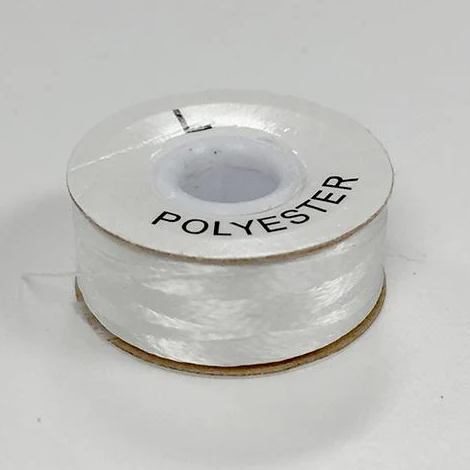Anyone that sells embroidery services wants to minimize thread breaks. Thread breaks stop your production and takes your time away from other tasks to get your sewing machine running again. Therefore, it is vital to keep thread breaks to a minimum. Here are seven (7) of the most common reasons why your embroidery thread might break and how to keep it from happening.
#1 Improper Threading Always make sure that the embroidery machine is threaded correctly. If the upper thread misses a point or is not passing through the thread guides smoothly, it can break. Sometimes people forget to thread through the thread break sensor wheel which can lead to faulty readings. As you continue throughout the day, make sure your thread is not snagging on the cone’s base. It is a good idea to periodically trace your sewing thread’s path from cone to garment.
#2 Bobbin Threading Make sure that you have the bobbin threaded correctly and make sure that the bobbin itself is wound correctly. As the thread on the bobbin is unwound, the bobbin should be rotating clockwise when you are looking at it. If you are getting multiple thread breaks across all of your embroidery threads in a single machine, check your bobbins. Note: there is debate about whether self-wound bobbins are worse or better than prewound bobbins. You always want a consistent bobbin tension. Because of this, we recommend prewound bobbins. Buying pre-wound bobbins makes it simpler to get started on your embroidery job.

#3 Needle Issues Problems with the needle can cause thread breaks. First of all, remember to change out the needle when it gets old or if it gets bent. Burrs in the eye of the needle can also shred and eventually break the thread. Furthermore, when replacing the needle, make sure it is properly positioned. You want the eye of the needle facing forward, and the scarf of the needle should be facing towards the machine, meaning that the smooth side will be facing the back. It is always recommended to get quality, organ needles. This provides a higher quality embroidery job and minimizes thread breakage and other issues.

#4 Quality of the Thread A very low quality thread can be prone to breaking, so invest in a higher quality thread, for example Robison-Anton's Super Brite Polyester Thread. You want to use 100% polyester thread. Always keep the thread out of direct sunlight and high heat.
#5 Tension Settings Make sure to have your embroidery machine tensions set properly. Having the tension too high pulls too tight on your thread, leading it to break. Test and adjust the tension on your machine regularly and as needed.
#6 Burrs Machine your machine for burrs, or any knicks or scratches on any of the metal parts of the machine. These little imperfections can snag the thread, causing the thread to break. These burrs are commonly found right around the needle plate, often caused by breaking needles.
#7 Picker That little metal arm by the bobbin that controls the length of the tail can be adjusted. If it’s adjusted out too far, you could have frequent pop-outs, a thread break where the thread pops out of the eye of the needle. You can have a technician adjust the picker or look to your machine’s manual to try adjusting it yourself.
Following these seven (7) tips will help minimize your embroidery thread breaks. It is always a good idea to periodically clean your embroidery machine and oil all the moving parts. Find some sewing cleaners and lubricants that can help your shop.

